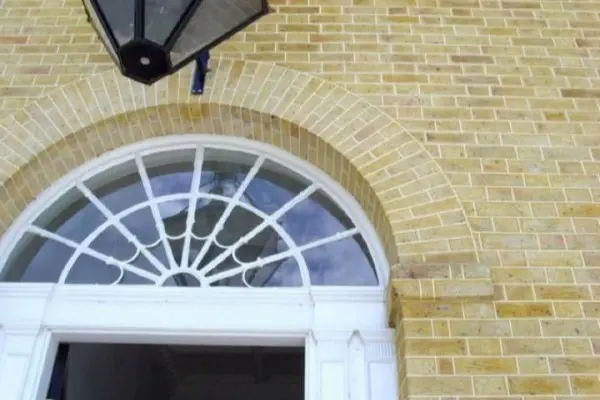Pointing
‘Pointing’ is the mortar between bricks – the visible edge of the mortar joint.
Maintenance and repair to the pointing and bricks will not only enhance the structure aesthetically but also retain its historic features – periodic replacement is vital to secure the longevity of the building and modern day value.
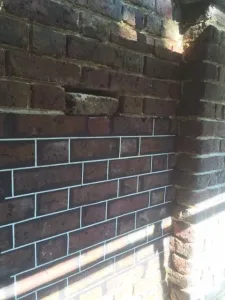
The deterioration in pointing will eventually lead to the poor performance of the building as a whole. The mortar element will have a lesser life span than the other materials used in construction,. The failure of the mortar will result in:
- The ingress of water into the external fabric of the building and subsequently internally for pre-cavity constructed buildings.
- Frost damage, indicated by the shelling of the face of the construction materials
- Structural damage that will eventually affect the building fabric if the two previous stages of obsolescence are not addressed. Subsequently, costly reconstruction may be required
- Originally bricks were “glued” together with a lime/sharp sand mortar which has the advantage of being porous, flexible and suitable for the soft bricks being used at the time. From the 19th Century sharp sand/cement has been more commonly used as it is much harder and impervious to water – also suiting modern hard bricks.
It is now acknowledged that original methods of lime mortars are not only more environmentally friendly but offer the flexibility to avoid the risk of mortar bonding failures.
In the early 19th Century it was always preferable to have no visible mortar – this was achieved by:
- Using high quality engineering bricks
- ‘Rubbed’ brickwork, where bricks are rubbed together until they fitted closely together.
- ‘Tuck’ pointing, where a line of white, putty mortar was ‘tucked’ into a slot cut in stained mortar
- Stained mortar to hide the pointing
All of these services are readily available from Stone Restoration Services Brick Restorers today together with all other forms of pointing including flush, tuck, bucket handle, weatherstruck and recessed.
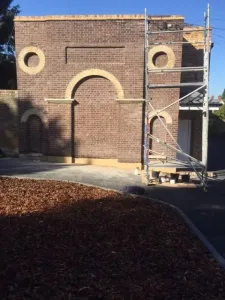
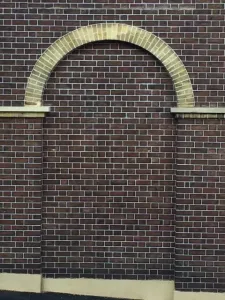
Tuck Pointing
Originally carried out towards the end of the 17th century, “Tuck pointing” consists of a flush joint with a fine white or black line running through it. It leaves a neat clean finish and was normally only applied to the front façade.
Usually working in pairs the existing mortar is carefully removed to a depth of approximately 18mm and the joints are prepared so they are clean.
Lime mortar with pigments is then applied making the joints flush and then a small groove is very carefully made in the mortar. A small ribbon (usually of a silver sand and lime mix) is then applied within the groove and trimmed either side. Finally, the tucked joint is cleaned and the joint is finished.
SRS will always consider how much of the weathered or damaged tuck pointing to remove as it could affect the historical integrity of the building.
SRS pride ourselves on being a leading specialist in tuck pointing, using traditional materials, tools and craftsmanship passed down through generations.
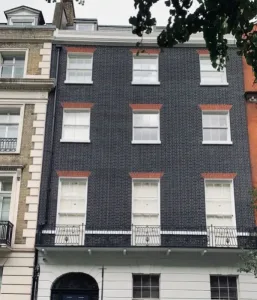
A perfect example of the benefits of tuck pointing, showing the very clean lines and neat finish after SRS have completed the project.
Mortar Matching
Our brick restorers offer a full mortar matching service. Powder form coloured mortar mix is added to the dry sand and a test carried out to ensure virtually all the bricks match – modern pigments can also be eradicated by sourcing specialist organic colourings.
Once accurate results are achieved suitable quantity batches are made to ensure consistent results throughout the project.
Brick Selection
Prior to the 19th century bricks were only used in houses for chimneys to reduce the risk of fire however their popularity rose and “yellow stocks” became common in London. With the introduction of “red” bricks the yellows were relegated to the rear of buildings.
We hold a depth of knowledge required to understand that bricks are anything other than simple – ‘Stock’, ‘brindle’, ‘diaper’, ‘faience’, ‘bond’, ‘gault’, ‘header’, ‘fletton’ are all common place with our brick specialists.
We have close working relations with all suppliers of bricks – new and reclaimed and can be readily sourced to ensure a perfect match for your project.
Our employees hold a wealth of expertise in both traditional restoring and new build methods utilising various limes forms.
We are aware of the need to develop future generations in traditional methods of bricklaying, mortar mixes and restoration to ensure the historic nature of any building is preserved.
